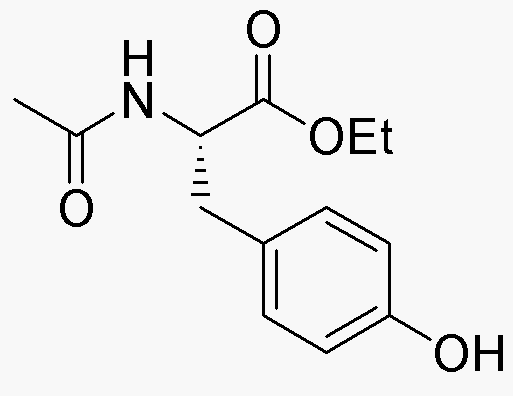Acetyl-L-tyrosine ethyl ester hydrate is widely utilized in research focused on:
- Dietary Supplements: This compound is often included in nutritional products aimed at enhancing cognitive function and mood, providing a source of tyrosine that supports neurotransmitter production.
- Pharmaceuticals: It serves as a precursor in the synthesis of pharmaceuticals, particularly those targeting neurological disorders, due to its role in dopamine production.
- Cosmetics: The compound is used in skincare formulations for its antioxidant properties, helping to protect the skin from oxidative stress and promoting a youthful appearance.
- Research Applications: In laboratories, it is employed in studies related to amino acid metabolism and protein synthesis, aiding researchers in understanding cellular processes.
- Food Industry: It can be utilized as a flavor enhancer or nutritional additive in functional foods, appealing to health-conscious consumers looking for enhanced dietary options.
General Information
Properties
Safety and Regulations
Applications
Acetyl-L-tyrosine ethyl ester hydrate is widely utilized in research focused on:
- Dietary Supplements: This compound is often included in nutritional products aimed at enhancing cognitive function and mood, providing a source of tyrosine that supports neurotransmitter production.
- Pharmaceuticals: It serves as a precursor in the synthesis of pharmaceuticals, particularly those targeting neurological disorders, due to its role in dopamine production.
- Cosmetics: The compound is used in skincare formulations for its antioxidant properties, helping to protect the skin from oxidative stress and promoting a youthful appearance.
- Research Applications: In laboratories, it is employed in studies related to amino acid metabolism and protein synthesis, aiding researchers in understanding cellular processes.
- Food Industry: It can be utilized as a flavor enhancer or nutritional additive in functional foods, appealing to health-conscious consumers looking for enhanced dietary options.
Documents
Safety Data Sheets (SDS)
The SDS provides comprehensive safety information on handling, storage, and disposal of the product.
Product Specification (PS)
The PS provides a comprehensive breakdown of the product’s properties, including chemical composition, physical state, purity, and storage requirements. It also details acceptable quality ranges and the product's intended applications.
Certificates of Analysis (COA)
Search for Certificates of Analysis (COA) by entering the products Lot Number. Lot and Batch Numbers can be found on a product’s label following the words ‘Lot’ or ‘Batch’.
*Catalog Number
*Lot Number
Certificates Of Origin (COO)
This COO confirms the country where the product was manufactured, and also details the materials and components used in it and whether it is derived from natural, synthetic, or other specific sources. This certificate may be required for customs, trade, and regulatory compliance.
*Catalog Number
*Lot Number
Safety Data Sheets (SDS)
The SDS provides comprehensive safety information on handling, storage, and disposal of the product.
DownloadProduct Specification (PS)
The PS provides a comprehensive breakdown of the product’s properties, including chemical composition, physical state, purity, and storage requirements. It also details acceptable quality ranges and the product's intended applications.
DownloadCertificates of Analysis (COA)
Search for Certificates of Analysis (COA) by entering the products Lot Number. Lot and Batch Numbers can be found on a product’s label following the words ‘Lot’ or ‘Batch’.
*Catalog Number
*Lot Number
Certificates Of Origin (COO)
This COO confirms the country where the product was manufactured, and also details the materials and components used in it and whether it is derived from natural, synthetic, or other specific sources. This certificate may be required for customs, trade, and regulatory compliance.


